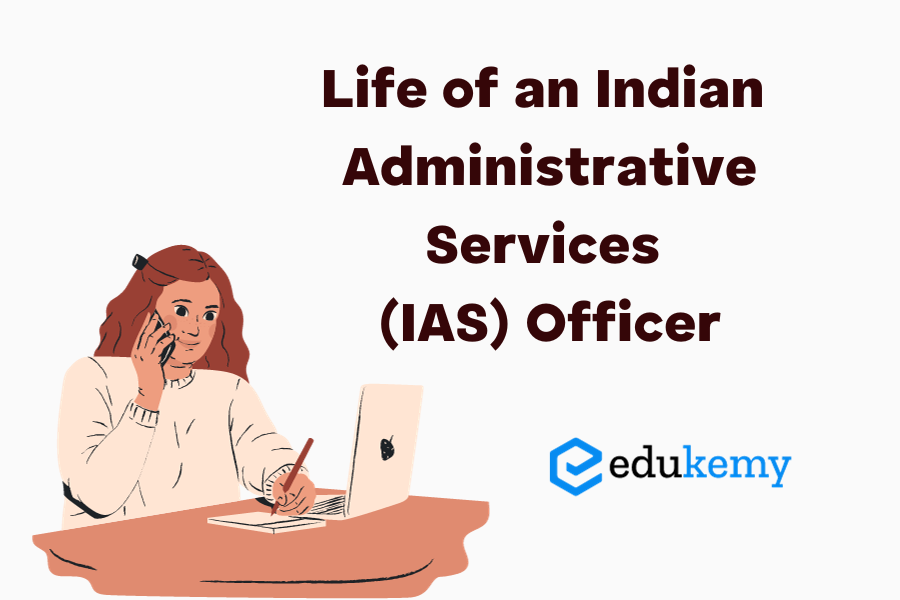
Posts like Indian Administrative Services have been one of the most demanded jobs from the British Era. Being in the most influential and respected professions, an IAS officer’s life is filled with challenges. They have the work to serve the Nation and make a difference in society regularly. Every UPSC conducts the Civil Services Examination, wherefrom the mass number of aspirants, only a few crack the examination, embarking on an exhausting journey of years of preparation.
IAS aspirants cover a vast syllabus throughout the preparation journey and appear for grilling exam sessions that consistently test the candidates’ perseverance. Beginning from the objective-based Prelims Examination to detailed answer-based solutions, students evolve their strategy and preparation to adopt and gain success in their purpose.
Living an IAS life is filled with enough peaks and troughs that cascade down to an enthralling life journey. After the final selection process, the recruits undergo training at Lal Bahadur Shastri National Academy (LBSNAA), where the officers get the training and experience of a lifetime.
Life at LBSNAA is meant to embed knowledge and capacity within the final selection to fulfill the roles of an administrator. Every day, the recruits undergo vocational, physical, and mental training to leap through challenging situations during their long tenure. The total duration of their course is for 2 years which has specific prospects built up:
- During the first 15 weeks of training, candidates are given a tour of the entire Nation. Along with the Pan India trip, students gain academic knowledge in tandem with other activities. The modules for academic training include Policymaking, land management, soft skills, project management, national security, e-gov, etc. The Bharat Darshan Program begins by dividing entire recruits into small chunks; throughout this event, the officers get insights into rich Indian culture and its heritage
- Along with all the structured events, recruits have to start their days at 6 AM, including physical exercise, lectures, and cultural activities
- Since the total duration of the program at LBSNAA is long, recruits get the opportunity to study different districts and gain knowledge about their administrative build-up.
- After sessions of accumulating knowledge and experience, recruits get the total experience of an IAS officer life. During the end of the phases, subject matter expertise disburses their proficient understanding of their specialization. Like every other graduate, the trainees work as an assistant secretary where the period is deemed to work like a training session which lasts for a few months.
Successful completion of training at LBSNAA then leads the recruits to graduate and lead an IAS Life. Their regular schedule changes and the fieldwork begins at 9 AM, which includes various meetings, tasks, departmental work, and visits to several zones to properly manage the policies and implementation of activities. An IAS officer’s core function has been to manage government affairs and continuously adhere to guidelines. Officers have to guide the department and present the report to their elected representatives. Throughout their stint at LBSNAA, officers put their knowledge into practical fields to observe their results in complying with government schemes and policies.
Below mentioned are the IAS officer power, which constitutes around 300 laws that define every case:
- As per the Code of Criminal Procedure (1973) of the Indian Penal Code: Sections 107,108,109,110,133,144, and 176 list out powers for maintaining law and order given to Magistrates.
- Tenancy Laws define the powers of a collector regarding revenue.
- The National Disaster Management Act lists out the powers of Chief Secretaries and Magistrates while directing disaster relief operations.
- Arms Act, Drug Licenses Act, Essential Commodities Act, etc. list out IAS officers’ power to enforce regulations in different situations.
Frequently Asked Questions (FAQs)
1. What is the typical career path of an IAS officer after successfully clearing the UPSC Civil Services Examination?
An IAS officer’s career begins with training at the Lal Bahadur Shastri National Academy of Administration (LBSNAA) in Mussoorie. After completion, they are assigned to a state or a cadre, where they start as a Sub-Divisional Magistrate (SDM) or an Assistant Collector. Over the years, they may take on various roles, such as District Magistrate, Commissioner, or Secretary, depending on their experience and performance.
2. How does the posting system work for IAS officers, and can they request specific postings or cadres?
The posting of IAS officers is typically decided by the cadre they are allocated to and the government’s needs. While officers can express their preferences, the final decision rests with the government. Seniority, performance, and personal preferences are considered when deciding postings. However, officers are expected to serve in diverse roles and regions to gain a well-rounded experience.
3. What are the challenges faced by IAS officers in their professional life?
IAS officers often deal with complex administrative challenges, such as managing law and order, implementing government policies, and addressing socio-economic issues. They may face political pressures, bureaucratic hurdles, and public expectations. Striking a balance between the demands of governance and ethical considerations can be a significant challenge. Additionally, the dynamic nature of administrative responsibilities requires continuous learning and adaptation.
4. How is the performance of IAS officers evaluated, and what opportunities for career advancement do they have?
Performance evaluations for IAS officers are conducted through Annual Confidential Reports (ACRs) and Performance Appraisal Reports (PARs). Promotion and career advancement depend on the officer’s efficiency, integrity, and commitment to public service. Officers can advance to higher administrative ranks, including becoming District Collectors, Commissioners, and Secretaries. Exceptional officers may also be appointed to central government positions.
5. Can an IAS officer pursue additional education or take a sabbatical during their service?
IAS officers can pursue additional education or training during their service, subject to the government’s approval. Many officers undertake specialized courses to enhance their skills in areas such as public policy, management, or international relations. While sabbaticals are not common, officers can apply for study leave to pursue advanced degrees or participate in training programs that align with their career goals and benefit the administration. Approval depends on the exigencies of the service and the officer’s performance record.
In case you still have your doubts, contact us on 9811333901.
For UPSC Prelims Resources, Click here
For Daily Updates and Study Material:
Join our Telegram Channel – Edukemy for IAS
- 1. Learn through Videos – here
- 2. Be Exam Ready by Practicing Daily MCQs – here
- 3. Daily Newsletter – Get all your Current Affairs Covered – here
- 4. Mains Answer Writing Practice – here

